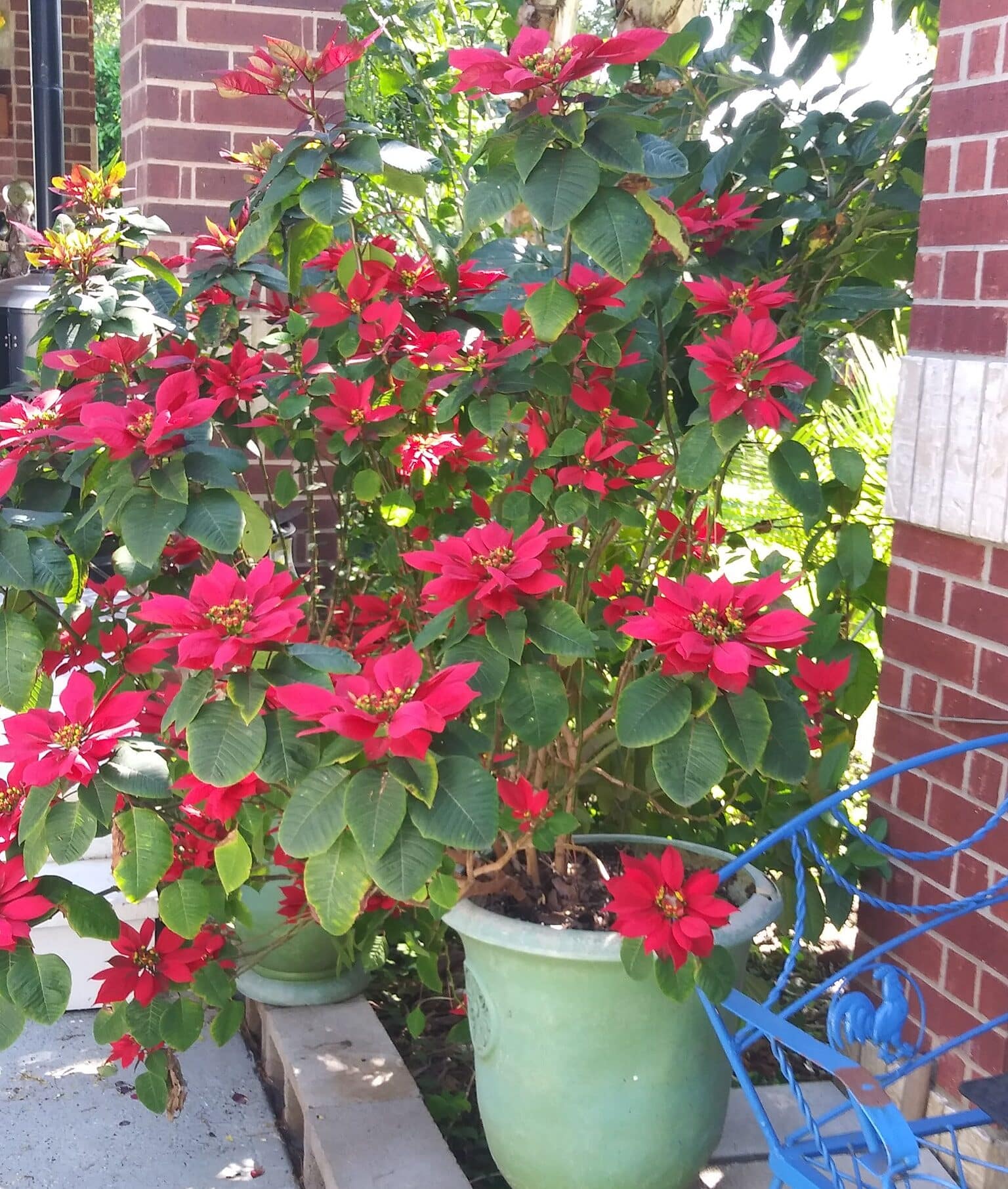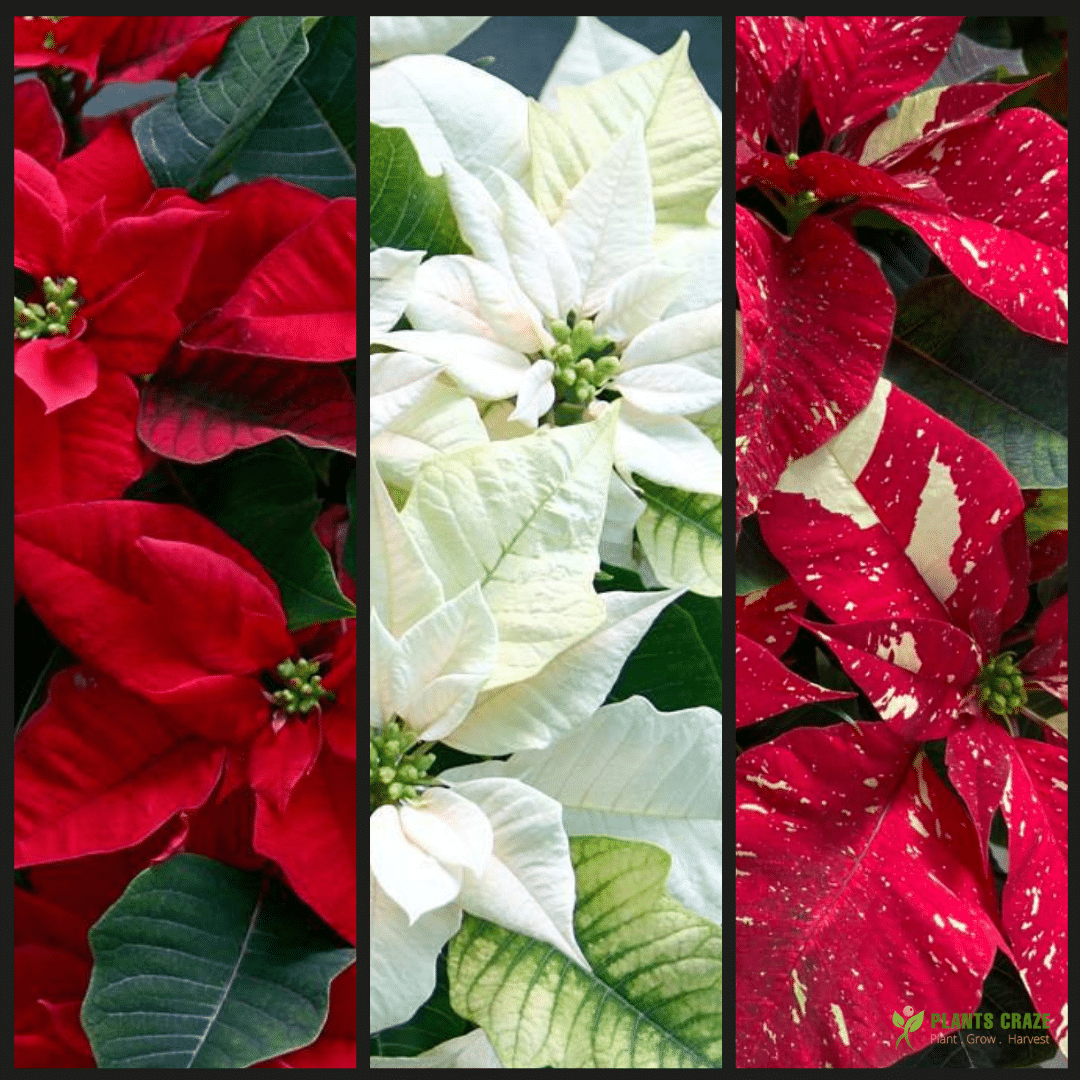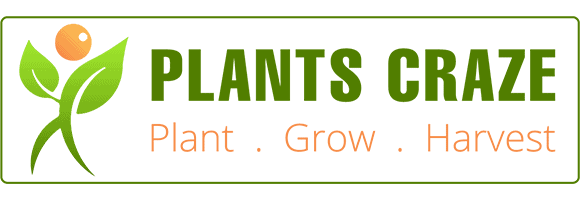Poinsettia flower has been Christmas staples for years, symbolizing December, as their red and green color spar Christmas hues.
Read further below to know the actual structure and meaning of the Poinsettia flower.
Table of Contents Show
Poinsettia Flower [Overview]
Poinsettia is native to Mexico, belongs to the Euphorbiaceae family, and goes by the Latin name Euphorbia pulcherrima.
Poinsettia’s bracts (or modified leaves) flare bright red to creamy white or pink colors, which are often mistaken for petals.

Look at some more facts about Poinsettia flowers on the table.
| Indicator | Identity |
|---|---|
| Structure | Cup-like structure with bracts |
| Shape | Ovate |
| Size | About 2.5-3 cm in diameter |
| Color | Yellow |
| Flower Type | Perennial |
| Smell | Pine-like terpenic scent |
| Blooming Period | Autumn to Winter |
| Toxicity | Toxic to Humans and Pets |
Poinsettia Flower Meaning and Symbolism
The Poinsettia flower has different meanings in different countries, representing love, hope, and kindness.
Modern customs view it as a Christmas Eve bloom, given and received on Christmas.
Let’s explore further and look at the cultural significance of Poinsettia flowers in different countries and communities.
| Country/ Groups | Meaning |
|---|---|
| Ancient Aztec | Represents peace and purity |
| Mexico | Represents 'Christmas Miracle Flower' in stories |
| USA | Represents the 'Christmas Season' (Red and Green Color of the flowers) |
| UK | Represents as 'Christmas Flowers,' and symbolic gifts showing kindness and community spirit |
| Religious Communities | Flower Shape: The Star of Bethlehem Red Leaves/ Bracts: The Shed Blood of Christ |
| Turkey | Represents patriotic connotation and nationalism |
Also, it is a wonderful present for individuals celebrating birthdays or remembering a loved one who passed away in December.
How Often Does the Poinsettia Flower?
Poinsettia flowers contain pink, red, or white petal-like leaves (bracts) surrounding the central cluster of tiny yellow blossoms.
These floral arrangements are known as cyathium. In a single plant, about 20-22 cyathia (flowers) are present when the plant is in full bloom.

The flower development continues after floral initiation until the opening of the flower bud (anthesis).
After that, Poinsettia flowers will last about 4-6 weeks and start falling off.
This is because Poinsettias flower every year and prepare themselves for the following year’s blooming season by shedding spent blooms.
How to Make a Poinsettia Flower?
Poinsettia blooms naturally in September (fall). To make a Poinsettia flower, consider these factors.
- Avoid bright direct light as it can delay the floral initiation.
- Maintain a constant average temperature between 68-70°F.
- Ensure a potting mix containing peat moss, organic perlite, and a pH between 5.8 and 6.2.
- Sustain a relative humidity between 50% and 70%.
- Water the plant weekly and avoid rigorous watering during shorter daylight periods.
- Opt for a 15-0-15 or 20-10-20 fertilizer. Increase the phosphorous dose as the plant shows signs of flowering.
How Do You Get a Poinsettia to Rebloom?
Here are the general steps to encourage a rebloom with a detailed monthly guide.
January-March
- Provide indirect sunlight for 6 hours daily.
- Lightly water whenever the soil feels dry.
April-May
- After the leaves/bract fall off, cut off all the stems to 4-6 inches.
- Cut back on watering and leave the soil to dry.
- Place the plant in a cool area with a temperature of around 60-65°F.
May-September
- Repot the plant by replacing the old soil mix.
- Start watering the soil and also begin fertilizing every 4 weeks until September.
- Prune new growth and allow only 2-3 leaves on each stem.
October-November
- Cover the plant with a bag or a box for 14 hours a day for 8 weeks.
- Continue watering and fertilizing the same way.
December
- You will now see new buds formation.
- Stop fertilizing till February and continue the care.
What Should You Do with Poinsettia Flowers?
Poinsettia flowers are inconspicuous, and their main attraction is colorful bracts, as the flower is there just for pollination.

Likewise, remove the tiny flowers using gardening scissors. The process is no different than cutting dead leaves.
Yet again, if you want the flower to pollinate and the seed pods to develop, you must let the flowers stay.
Pollination of Poinsettia Flower
Since Poinsettia is monoecious, with the male and female flowers found on the same plant.
Like this, many flowers sit on the top of the inflorescence, looking like a complete flower. Colorful petal-like bracts surround the blooms.
This type of inflorescence is called a cyathium. Also, each flower is basally surrounded by fleshy nectar glands.

The female flower sits on the stalk, pushing the pistillate above the stamens for cross or self-pollination.
If your poinsettias are outdoors, butterflies, birds, and bees may naturally pollinate them, getting lured into the colorful bracts and nectar.
However, to pollinate the indoor Poinsettias manually, follow the instructions.
- Grab a clean fine-tip paintbrush, clean it with 70% rubbing alcohol, and wait for it to dry.
- Stroke the brush gently from flower to flower to collect the pollen.
- Then gently rub the brush on the female flower and wait a few days.
- The colorful bracts will drop eventually, indicating successful pollination.

Health Considerations to Keep in Mind
ASPCA states Poinsettias are toxic to dogs, cats, and horses. When you cut a Poinsettia, it exudes a milky white substance, a latex sap.
The fluid can be irritating and may cause dermatitis, but it is not fatal.
You should notice clinical symptoms if your pets consume the sap, including vomiting and mouth and stomach irritation.
Contact the immediate helpline number when you notice any weirdness or rashes on your pets.
- American Association of Poison Control Centers (AAPCC) at (800) 222-1222
- ASPCA Poison Center at (888) 426-4435
Where to Buy Poinsettia Flowers?
Retailers and online stores can readily avail you of seedlings, seeds, or a blooming Poinsettia.
| Shops/ Sites | Expected Delivery Dates |
|---|---|
| Send Flowers | Same Day Delivery |
| Walmart | Within 2-5 days after placing an order |
| Costa Farm | Varies aaccording to the location |
From Editorial Team
Conclusion
Poinsettia flowers have unique structures and pollination methods.
The trend behind the Poinsettia flower meaning has also boosted the plant’s popularity as a soon-to-be Christmas favorite.
However, the plants and their flowers are not pet-friendly, and you must always keep them away from your furry companions.


